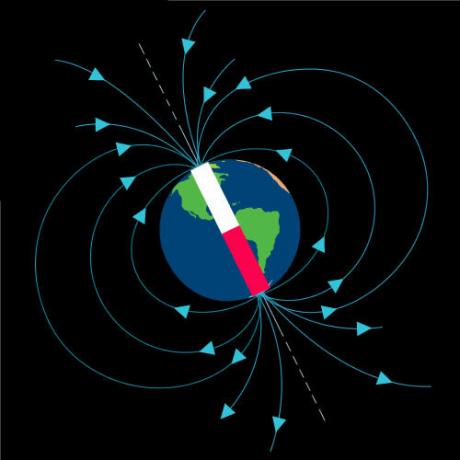It is known that the Sun is the star of our solar system. We also know that it emits millions of particles per second to all directions in space. We perceive these electromagnetic radiations, also called solar winds, in the form of heat and light.
The amount of radiation that reaches the Earth is smaller due to the protection exerted by the Earth's magnetic field. The Earth's magnetic field interacts with electromagnetic radiation causing them to be stopped and also acts by diverting them from their initial trajectory. That's why we can say that the Earth behaves like a giant magnet.
The first to claim that the Earth behaved like a giant magnet was scientist Willian Gilbert. A simple experiment can prove this Earth behavior. This experiment consisted of placing a magnet suspended freely by its center of gravity on the Earth's surface. In this experiment, repeated several times, they found that the magnet always oriented in a north-south direction, with this they concluded that the Earth actually behaved like a magnet.
But where are the Earth's north and south magnetic poles located?

As we can see in the image above, the magnetic poles are located at the ends of the magnetic axis and close to the poles. geographic, that is, the magnetic south pole is close to geographic north and the magnetic north pole is close to the south geographical. It is important to remember that the magnetic axis does not coincide with the Earth's rotation axis, which are separated by approximately 13º.
We still don't have a correct explanation for the origin of the terrestrial magnetic field, but the most accepted hypothesis is that the terrestrial magnetic field becomes originates from the intense electrical currents that circulate inside it and not from the existence of a large amount of magnetized iron also in its interior.
By Domitiano Marques
Graduated in Physics
Source: Brazil School - https://brasilescola.uol.com.br/fisica/o-campo-magnetico-terra.htm
